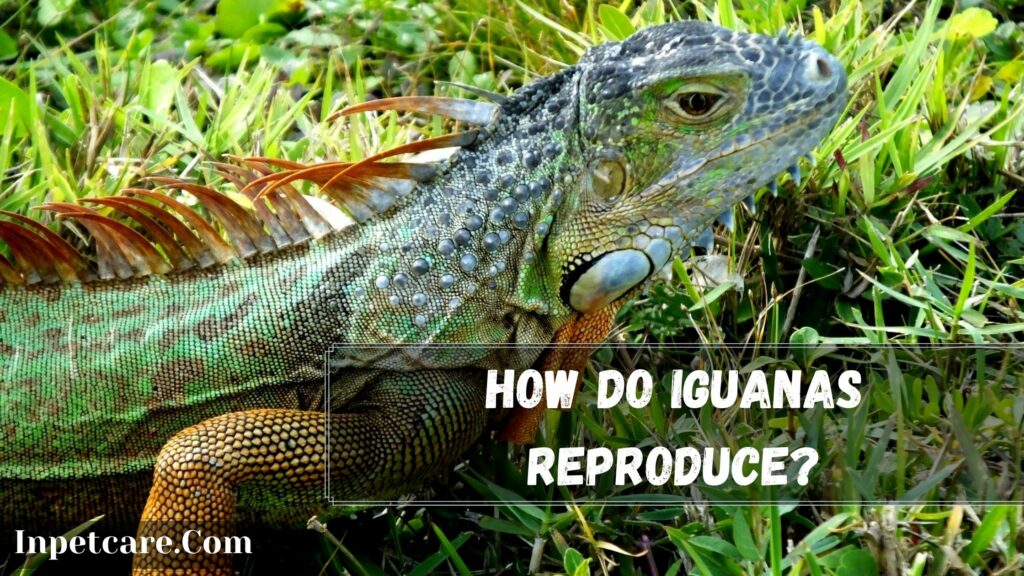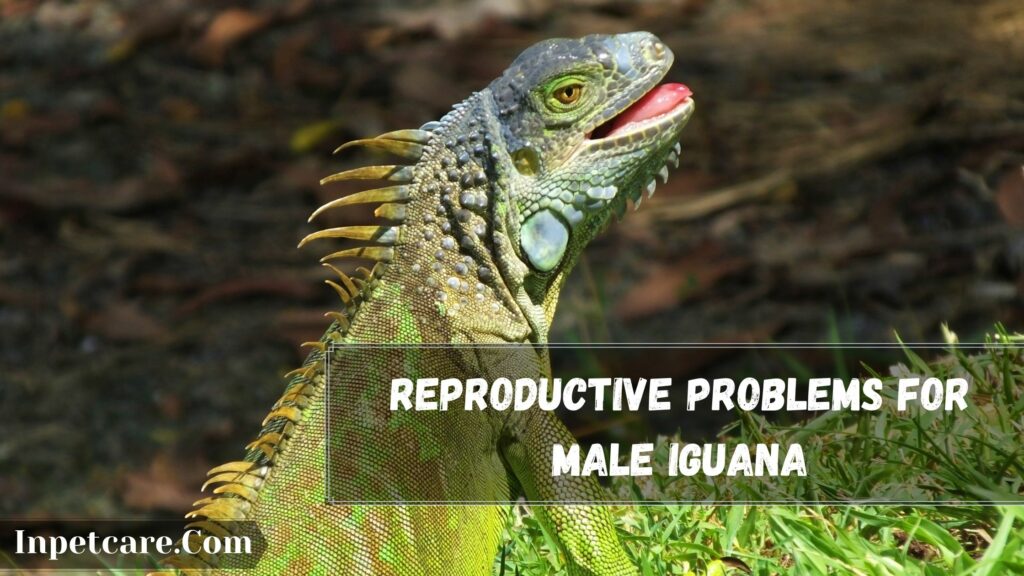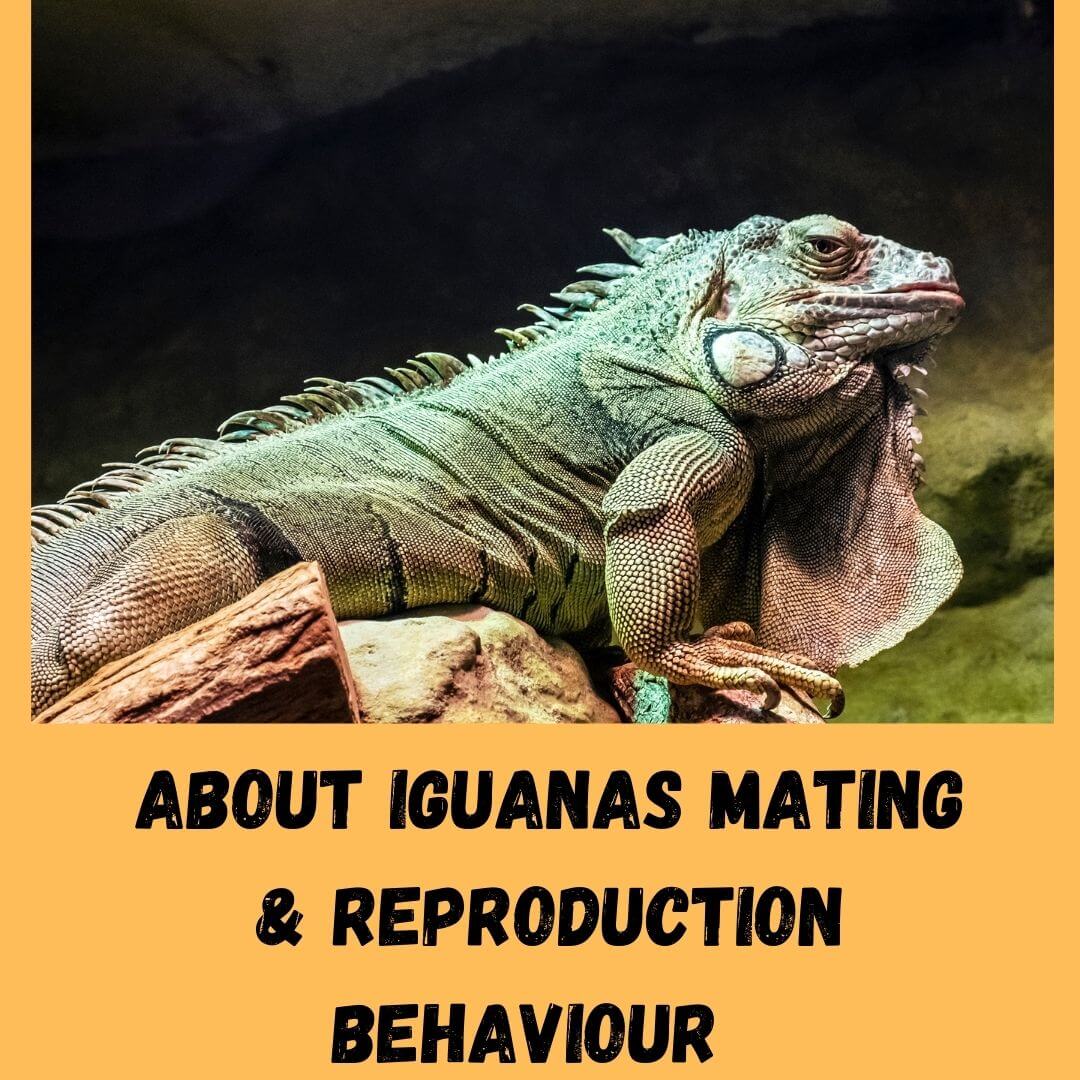If you’ve ever thought about breeding your Iguana, you would be surprised to learn the process is quite complex and involves many exciting behaviors and mating rituals. It is essential to understand how to best monitor and facilitate your lizard’s breeding stages to end up with healthy parents and babies for years to come. Let’s find out the answers to the questions: How Do Iguanas Reproduce? & How Do Iguanas Mate?
How Do Iguanas Reproduce?

When it’s time to finally put your breeding pair together, you will notice an exciting set of courtship behaviors from both lizards. As we touched on earlier, it is best to cohabitate your breeding pair for a few days to a week and monitor them to look out for at least one successful breeding attempt.
Generally, your lizards will display much more interest in each other than they would if they were not a viable breeding pair. They will likely spend most of their time together before breeding and for some time after copulation.
Keep in mind not all breeding pairs will be viable or get along well enough to mate. Suppose you notice excessive aggression or an outright refusal to mate from either Iguana. It is best to separate them and attempt the process again with a different lizard or lizards.
How Do Iguanas Mate?
Once your lizards have displayed sufficient interest in one another via the courtship above behaviors, the male will likely approach the female for copulation. First, the female will come to the male and sit still in front of him to signal she is ready for him to mount her.
In response, the male might circle her once or twice before finding a preferable position to climb on top of her. Like some courtship rituals, this process will often appear to be rather aggressive and even a bit violent to someone unfamiliar with Iguana breeding. Again, this is normal; be sure the male isn’t seriously injuring the female or vice versa. If either lizard draws blood, it is best to separate them and tend to their injuries.
In most cases, the male will climb onto the female and bite her neck and back to properly mount her. His hemipenes, usually hidden, will emerge and line up with the female’s cloaca. He will insert the hemipenes into her cloaca for fertilization.
It might take a few attempts for the male to position himself properly, and you will likely observe some flailing and leg flapping from both lizards while they figure things out. After the male has inserted his hemipenes into the female’s cloaca for a few seconds, the female will lift her head to signal to the male it is time for him to release her.
The process is pretty quick, and it’s usually over within a few minutes once the courtship behaviors have concluded. If the breeding attempt is successful, the female would become gravid and begin producing fertilized eggs.
To ensure successful mating and fertilization occurs, it is good to allow the breeding pair of Iguanas to mate a few times over a few days or so before separating them. Once the Iguanas have successfully coupled and fully dissolved, it is safe to put them back in their enclosures. Keep their squares separated far enough, in separate rooms, so the lizards cannot see each other.
It is common for the male to relentlessly pace around his enclosure and aggressively head bob at the female from across the room in his tank, which is stressful for him and the female if she notices him. Plus, your gravid female will need peace while her body grows her clutch of fertilized eggs, so keeping her enclosure in a quiet room by herself will help to make her feel comfortable and safe.
Can Iguanas Mate With Other Lizards?
Iguanas cannot mate with other lizards. Their physical reproductive structures are too different from compatible, and their genetic makeup is species-specific. Iguanas have courtship rituals before mating that are unique to their species.
The thing that makes a species a species is that they possess a fantastic genetic makeup that is significantly different from other species. This genetic makeup determines the physical structure compatible between males and females of the same species. Courtship and mate selection behaviors that precede mating and chemical signaling are also unique to a species.
This means that species that are too different cannot mate or produce offspring. Some species that are incredibly close in genetic makeup may be able to mate, e.g., donkeys and horses or lions and tigers. The Iguana species is too physically distinct to be able to breed with any other lizards.
Iguanas also have a species-specific courtship ritual before mating and will not mate without it. On the other hand, subspecies of Iguanas can mate because they are of the same species, just different enough to be categorized into subspecies.
Can Iguanas Mate With Siblings?
Iguanas that are siblings can mate. But this goes against their natural survival tactics. Iguanas aim to breed to increase genetic diversity so that the species is more resilient and adaptable. Inbreeding can cause genetic disorders.
Technically, Iguanas can mate with any of the opposite sex of their same species. Whether it is a sibling or a parent, it is possible. Iguanas do not maintain family bonds or have a concept of parents or siblings. Other Iguanas are just other Iguanas to them. So if a male and female are exposed to time together, they will likely mate even if they are siblings.
The inbreeding of Iguanas is hotly contested in the reptile community. Most Iguana owners will not breed related Iguanas as it is proven to cause genetic disorders among offspring. But some breeders argue that genetic disorders only appear after generations of inbreeding, and inbreeding is needed to continue pure bloodlines and breed desirable characteristics such as specific patterns or colors.
It is irresponsible to breed Iguanas closely related as genetic disorders will continue to be created and passed on for generations. Offspring will become sick and have poor welfare.
Interesting Further Reading
- Are Bearded Dragons And Iguanas The Same?
- 7 Safe Plants For Iguana Enclosure
- 9 Best Type Of Iguana For A Pet
Reproductive problems for male Iguana

The most common reproductive problem for male Iguanas is:
Hemipenile Plugs (Seminal Plug), And Prolapsed Hemipenes.
A hemipenile plug may look to some like an object sticking out of the butt! Plugs sticking out of hemipenis and swollen vent are some of the signs you may see when seminal plugs are present. The tip of the seminal plug that may be visible is hard.
The seminal plugs are $emen and skin cells that can accumulate from unsuccessful attempts to mate with an unreceptive female or premature ejacuIati0n. The hemipenile plugs (seminal plugs) will irritate. There may be some bleeding inside the hemipenile walls as the soft tissue is troubled by the more complex plugs.
Like most reproductive issues, these are associated with the quality of care in captivity. The hardened tip is visible. The hemipenes are delicate tissue, and attempting to remove the hemipenile plugs can result in prolapse or permanent damage.
Bathing multiple times over a day may assist in loosening the hard edges of small seminal plugs if they are protruding externally. However, it is unlikely to help them come out on their own. If the hemipenes cannot be retracted, call a vet and discuss means to keep the hemipenes moist while waiting for treatment.It is best to involve a vet when plugs are detected.
The vet may be able to dislodge the seminal plugs by massaging the hemipenes with antibiotic cream; however, surgical intervention may also be required. If prolapse has occurred, then the hemipenes will likely be placed back into the cloaca and stitches in place to prevent it from coming back out while recovering.
If the hemipenes have become necrotic, they will need to be amputated. Hemipenile plugs are also known as seminal plugs or sperm plugs. Male Iguanas that suddenly become aggressive are likely associated with the season. See the post-aggressive Iguanas.
How Can I Help My Iguana Lay Her Eggs?
Although trying to massage the eggs out can be very tempting, the potential for rupturing eggs is very high. This may lead to several consequences: egg yolk peritonitis and internal trauma from jagged shell fragments, to name a few. Avoid excess handling; this condition is excruciating.
An Iguana that is egg bound or has follicular stasis may seem similar, but the treatments are different. Seek professional veterinary advice. As with many conditions in Iguanas, they have likely been unwell for several days before the outward signs of pain or discomfort are evident.
Immediate medical treatment is advised to prevent their condition from spiraling downward. In the meantime, keep your Iguana warm and hydrated. A stable patient is a better candidate for surgery and will tolerate medications better than an emaciated, dehydrated Iguana.
If your Iguana appears egg-bound, it is time to call your vet. See the article on Iguana egg binding for more support.

94% of pet owners say their animal pal makes them smile more than once a day. In 2007, I realized that I was made for saving Animals. My father is a Vet, and I think every pet deserves one. I started this blog, “InPetCare”, in 2019 with my father to enlighten a wider audience.

